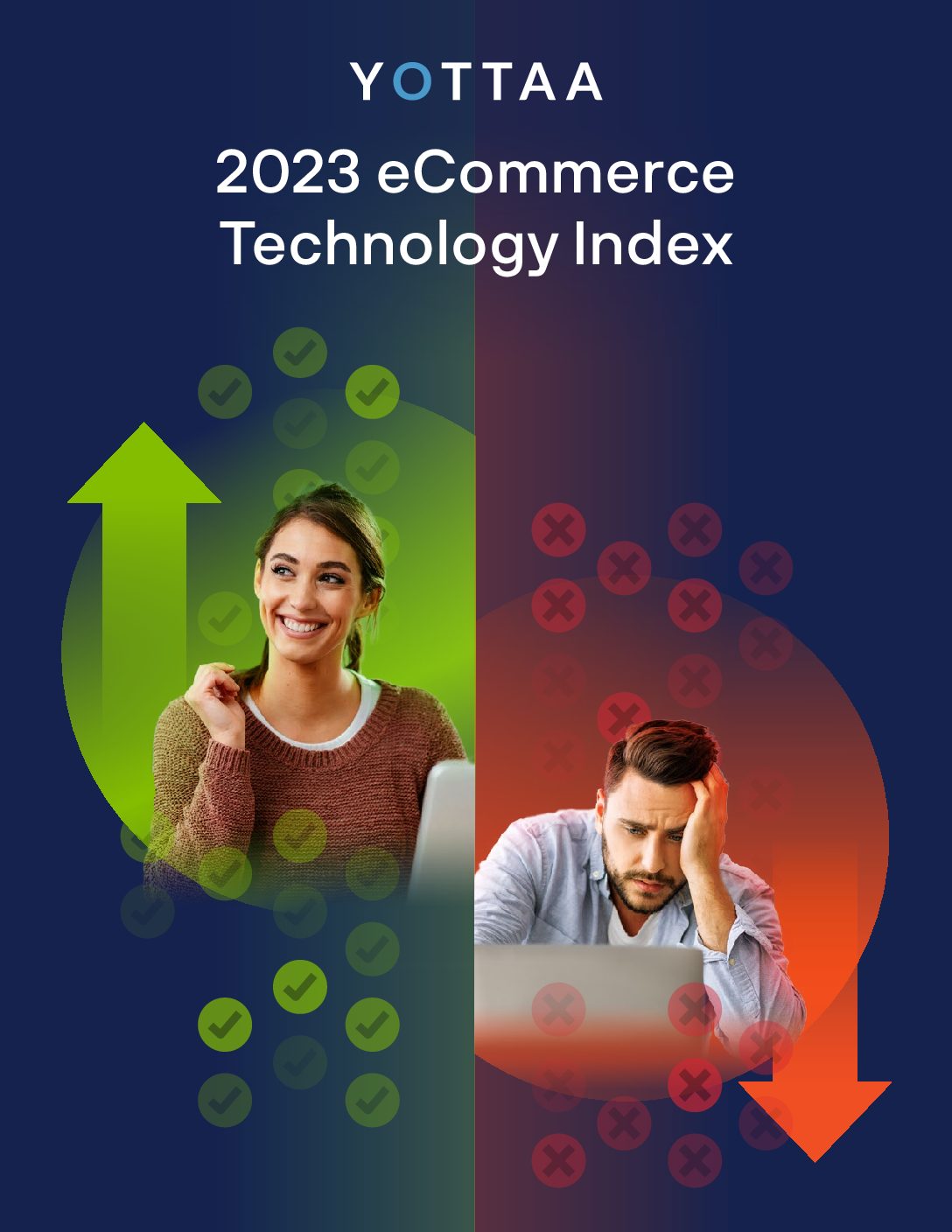To put it mildly, for eCommerce sites, the past 18 months have been a bit volatile.
From massive traffic gains to supply chain nightmares, rising acquisition costs, angry customers, and more recently, low-to-no traffic gains, it’s been a lot to make sense of.
Brands have shifted their focus towards a tried-and-true recipe for success – making the most out of every shopper’s experience.
The fact remains, however, that knowing your brand needs to do whatever it takes to deliver a seamless customer experience is just the start. The question now becomes – ‘How am I going to do it?’
YOTTAA has you covered.
This week, YOTTAA released the 2023 eCommerce Technology Index to benchmark the performance of the most widely adopted third parties across the YOTTAA community of nearly 2,000 eCommerce websites. Key stats from the index include:
- 619 third parties rated based on site performance impact
- 30 third party technology categories
- 5.5 billion+ page views
- Third party technology adoption has risen 19% over the past year
If this is your first time reading through the eCommerce Technology Index, welcome! This report includes so much data to sort through that you might not know where to begin. Here are a few terms to be aware of before you dive in.
Performance Impact Rating (PIR)
Each third party in the index earns a Performance Impact Rating (PIR) that measures the performance impact of a third party on an eCommerce website. The PIR is calculated by adding a third party’s performance violations and the delay page load violations together and then dividing by the total number of resources loaded by the third party across the site.
The PIR is the most accurate measure of a third party’s performance impact on site speed, as well as the shopper experience. The PIR assigns a red, yellow, or green color to each technology. A red rating indicates a significant negative impact on site performance and represents 17% of all third parties.
Each shopping experience will vary from one eCommerce site to another, as well as the third-party performance will vary from app to app. The variance becomes more pronounced when observing the impact that different technology categories have on the site’s specific experience. Some third parties simply collect data (web analytics), while others inject content into the site (personalization).
Performance Violations
A performance violation is an individual error that occurs when a single third party takes longer than one second to load.
Delay Page Load Violations
A delay page load violation is an individual error that occurs when a single third party extends the time it takes for a shopper to be able to interact with a site.
The Importance of Site Optimization
YOTTAA tracks, monitors, and optimizes the performance of nearly 2000 eCommerce sites.
With insights drawn from eCommerce activity during December 2022, representing 5.5 billion page views, YOTTAA-driven optimization provided an average page load savings of 1.3 seconds, a 24% improvement in page speed. These optimizations saved two million hours of save time.
Two million.
Now that sounds like a sure-fire way to deliver a smooth customer shopping experience, doesn’t it?
Third Parties Are Your Best and Worst Friend
Third parties are integral to success in delivering the customer experience your shoppers expect – and want. But if you’re unable to manage those same third parties efficiently, your eCommerce site will suffer delays, and you will soon be wondering why those prospective customers never materialized and left forever. In the coming weeks, we will further explore the 2023 eCommerce Technology Index, and sort through the trends, the surprises, and what lessons eCommerce sites can learn from to make 2023 their best year yet.

